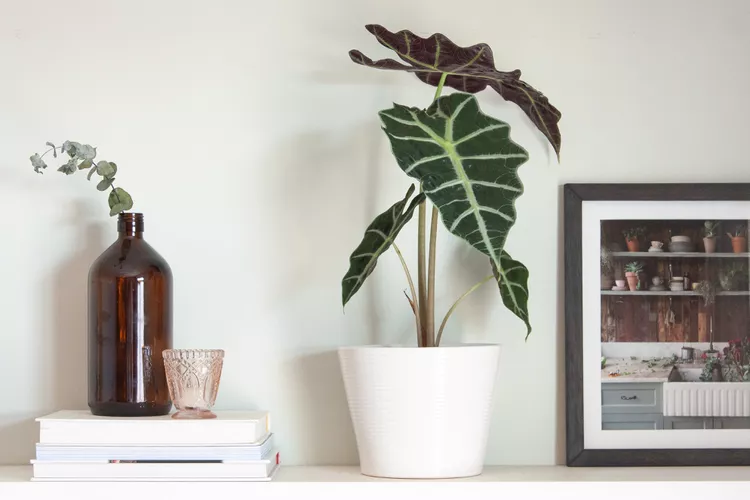
Alocasia x amazonica (Amazonian Elephant Ear) is a strong rhizomatous evergreen perennial with dark green, narrowly arrow-shaped, wavy-edged leaves that can grow up to 2 feet long (60 cm), embellished with ribs and borders highlighted in bright creamy white. It is a remarkable and lovely houseplant. Yellow blossoms that resemble calla lilies occasionally grow among the older plants’ vividly patterned leaves. Good sensitive perennial for use as a centerpiece or specimen.
Care
The good news is that it’s not difficult to grow an elephant’s ear from the Amazon. Rich, wet soil with filtered sun or shade are favorites. Like the majority of tropical plants, they require a lot of water and do best in warm, humid environments. The optimal time to divide these plants is in the spring. Corms from a healthy specimen with many stems can be dug out and replanted in smaller pots. For the finest presentation, remove all leaves that are dead or dying.

Light
Amazonian elephant’s ear plants require a lot of direct, strong light. They can endure up to 80% shade, but they prefer around 60% shade since it promotes healthy growth and gives the leaves a rich, emerald tint. Avoiding direct sunlight exposure is advised because it can bleach or scorch the plant’s leaves.
Soil
This plant prefers a potting soil that drains quickly and is properly aerated. The best soil is one that is loose, organic, and rich in peat moss. You can add extra sand or perlite to your soil mixture to make it lighter if it is too heavy..
Water
Keep the soil moist and bear in mind that Amazonian elephant’s ear plants dislike wet feet. Water your plant in the morning from below to keep the leaves from getting too damp (at the root zone). Throughout the winter, let the soil almost completely dry out in between watering because the plant needs this time to rest. But, if it completely dries, the plant may become dormant.
Humidity and Temperature
The Amazonian elephant’s ear is a tropical plant, hence it will either become dormant in cold climates. It prefers weather that is comparable to that of Southeast Asia, where temperatures often range from 65 to 75 degrees Fahrenheit. The plant also enjoys higher-than-average humidity levels.
Fertilizer
Because of its propensity to eat a lot of food while it grows, the Amazonian elephant’s ear will benefit from applications of diluted balanced fertilizer. Starting in the spring, feed the plant every two weeks until the end of August, when you should stop and begin the cycle all over again in the spring. The plant’s leaves may occasionally turn yellow; if this happens, consider adding micronutrient-rich fertilizer or once a month soaking the plant’s base in Epsom salts.
Table





